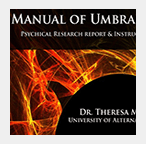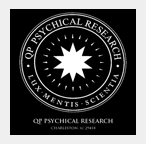Umbrakinesis
Parapsychology Articles, Papers and Books
Home > Articles > Psychic Phenomena > Psychokinesis > Umbrakinesis
![]()
|
| NEWSLETTERS |
| Get the best from QPsychics.com in your inbox! |
|
| PARAPSYCHOLOGY ORGANIZATIONS |
"With confidence in the importance of utilizing the investigative mode of the established sciences in order to inquire into the authenticity and to potentially explain the nature of psychical phenomena."  |
 |
 |
 |
 |
Umbrakinesis Publications
Umbrakinesis is the psychical influence of the electromagnetic spectrum including visible light and part of the near-infrared range. Umbrakinetic-based influence includes any form of electromagnetic radiation capable of causing a direct visual sensation directly within wavelengths of 380-950 nanometers whether wavelengths are pure or mixed (example: white, purple, violet, blue, green, yellow, orange, red, and near-infrared).Light exists as tiny light “packets” called photons. Photons are quantized excitations of electrodynamic modes that are point-like quanta in which express wave-like and particle-like properties (wave-particle duality). Photons move independently of one another, and are localized to light waves spread continuously over space. Umbrakinetic influence includes the creation, annihilation, and modification of remote photic (light) sources and the influence of natural ultra-weak biophoton emissions, which can be utilized in light based therapeutic (healing) techniques.
(Adapted from the paper "Manual of Umbrakinesis: Applications, Experimentation, and Measurement” by Theresa M. Kelly, MsD.)
Free Umbrakinesis Articles
Publications for Sale
|
||||




